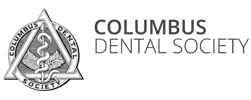The incidence of tooth decay in adults in the U.S. today is higher than children. The rise of decay rate in adults is associated with increased longevity, decreased tooth loss, and increase in root caries (with periodontal attachment loss). Silver diamine fluoride has recently been cleared for use by the U.S. Food and Drug Administration in 2015 (Advantage Arrest, Elevate Oral Care, LLC) for treating dentinal hypersensitivity in adults. Silver diamine fluoride has been used on carious lesions for more than 80 years in Japan, Australia, and other countries. Silver diamine fluoride is a colorless topical medication with a pH of 10, 5-6% fluoride, and 25-29% silver. The ammonia stabilizes the high concentration in solution, the fluoride promotes remineralization, and the silver acts as an antimicrobial.
Numerous studies have shown the following:
• When applied every 6 months, 90% of the caries is
arrested
• Demonstrated better caries prevention than other
noninvasive materials
• Promotes remineralization and resistance to
demineralization of both enamel and dentin
• Antimicrobial activity remains well after application
Indications for topical treatment with silver diamine fluoride include:
• Treating sensitive root surfaces (studies show better
than fluoride varnish)
• Caries control of patient with extensive and
uncontrolled decay rate
• Patients with high caries rate (e.g., cancer patient
with xerostomia)
• Difficult to treat or access- limiting caries lesions
(e.g., furcations, subgingival margins)
• Non cooperative adults due to cognitive disabilities
(e.g., autism, dementia)
• Patients with limited access to dental care
• Caries vulnerable tooth surfaces (e.g., overdenture
abutments, periodontally exposed roots, partially
exposed third molars)
The application involves simply drying the tooth surface, then applying the liquid to the lesion, with no special instructions for post-application care. Dentists and auxiliaries that apply this solution must be aware of the precautions for handling silver diamine fluoride.

 Dr. Sakamoto
Dr. Sakamoto
 Dr. Mannava
Dr. Mannava
 Our Team
Our Team
 FIRST VISIT
FIRST VISIT
 PATIENT FORMS
PATIENT FORMS
 DENTAL INSURANCE
DENTAL INSURANCE
 POST-OP INSTRUCTIONS
POST-OP INSTRUCTIONS





